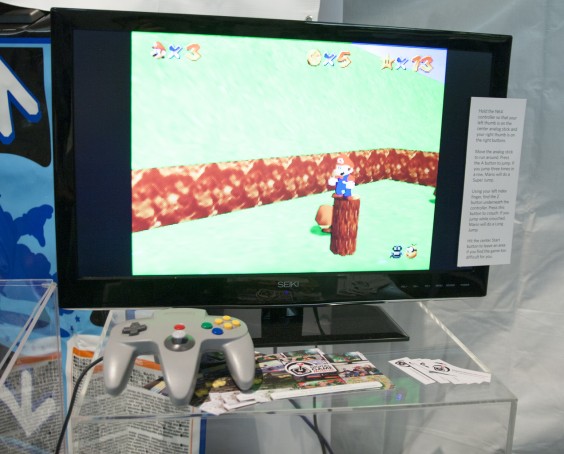Evolution of the Console Controller – Super Mario 64 (1996)
Super Mario 64 was the first fully 3D Mario platformer and the flagship launch title for the Nintendo 64 gaming console. The game pioneered controls, a camera, and gameplay possible only on 3D capable hardware and with analog controls. It was revolutionary at release, influenced the design of nearly every 3D platformer released since, and remains widely considered one of the best video games of all time.
To achieve the kind of gameplay envisioned by Shigeru Miyamoto, analog controls were required. The analog stick allows Mario to move in a full 360° circle and allows the player to control Mario’s speed via the degree of tilt applied to the stick. Complex jumping, flying, swimming, and even downhill racing and sliding moves are all required to beat the game. Those same moves would be difficult or impossible with a D-Pad.
Super Mario 64 employs a dynamic camera that follows Mario and attempts to avoid obstacles while also moving to especially good viewing angles at appropriate times. The player is offered some control over the camera in a manner similar to a D-Pad via the controller’s four C-buttons, though the camera largely controls itself. Similar functionality is often handled by a second analog stick in contemporary 3D games. The impact on later 3D games, both cameras and controls, has established Super Mario 64 as the standard for platformers to emulate and improve upon.
Up to Analog Era – Back to Virtual Boy – Forward to Nintendo 64
On loan from Scott Kornahrens

